Sindhudurg and her stories
“Can you see the fort there?” We were at the Malvan beach, when we saw a two-mile-long wall of a fort standing tall against the horizon. “There are close to 15 families staying there even now. My aunt lives there…”
We had befriended a self-styled guide who decided to give us an armchair history of Sindhudurg, the fort that lent its name to the district. “Sindhu means sea and Durg is, of course, fort; hence the name,” he explained.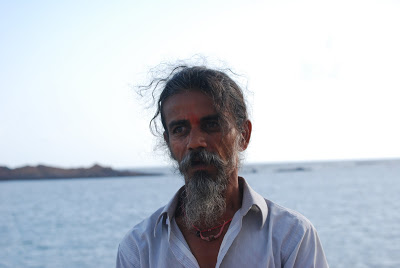
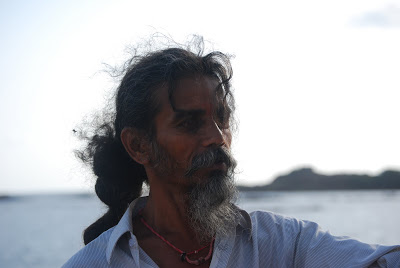
Built by Maratha emperor Shivaji in the 17th Century across 44 acres of land, this ocean fort located in Kurute island is home to several shrines, including one dedicated to the warrior king built by his son Rajaram. A footprint and a palm relic of the Maharaja are among the tourist attractions here.
The monsoon had just set in and none of the boatmen were willing to take us ashore to the fort, but they vied with each other to tell us stories. When Shivaji was ruling over Konkan, he was looking for a sea fort that would defend him from the onslaught of the Siddhis of Murud Janjeera.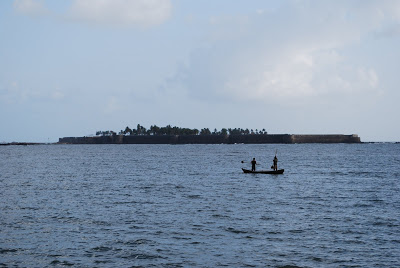
The Janjeera fort had been unconquerable and Shivaji selected the rocky island of Kurute, and along with his commander, Hiroji Indulkar, built the fort at Sindhudurg. Built using molten lead mixed with mortar, it had 32 towers and was meant to be their naval headquarters. The fort remained with the Marathas before it was taken over by the East India Company.
I was more curious about the families living in the abandoned fort today. “My aunt stocks a lot of food until the monsoon gets over. It’s very difficult to keep sailing in the choppy waters.” The guide told us that most of the families were those of mavlas or soldiers who fought in the Maratha army. For generations, their descendants lived here; the younger generation has, however, moved to the shore in quest of employment.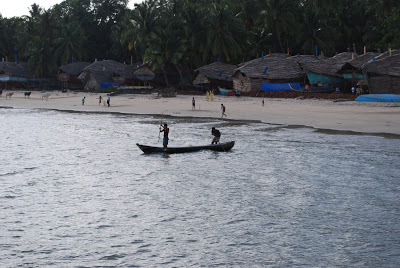
Tourism seem to be their main livelihood, besides fishing. “Most of the houses are ancient as well. We cannot even sell them, and there are no facilities here; so, its like we are all cut off from the world, and continue to live in the glorious days of the Maratha empire.”
The tides recede and a private boatman offered to take us ashore. “Madam, there are ponds there which will never become dry. I will show you hidden passages. Did you know there was a coconut tree with a branch…?”
As we start negotiating the rate, I wonder about the families stuck in a time warp, cut off from civilisation. We start sailing to listen to their stories.
Published in Inside Story, Metro Plus supplement of The Hindu on September 21,2009

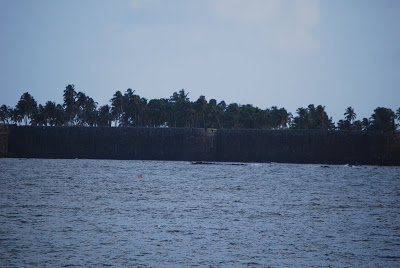
Sounds like a real treasure.
I didn’t check the story that day, but glad i check now. Interesting how people live in the island for days with connecting the world! Great snaps, the last one is so nice with children playing cricket on shore and fishermen on boat.
A historic place full of beauty and customs!
“Did you know there was a coconut tree with a branch…?”
Yes, it’s like a V shape. Had some green branches, but nothing is left now, except the V shape!
Good article.
Very interesting . can you tell me what the flag in the center of the first photo is
very interesting!
There are such interesting forts in the Konkan region! Thank you for sharing this story. Did you go to Murud Janjeera too?
Never knew about this fort until I saw your and Charu’s posts.
Cool post.
Maybe, even more beautiful than Kerala
Very interesting… glad I stopped by:)
Hey Lakshmi, did you know something bizarre? Despite its location in the sea, there is a freshwater well inside the fort. That’s how residents survive long periods there. 🙂
This is the sorry state of affairs of almost all the forts in and around Maharashtra.I am saddened when I climb Raigad, the capital of Shivaji Maharaj and see the condition of tilting ‘manore”. Our Politicians named the dist as Sindhudurg but they are least interested to take up any renovation of such important monuments. And now They have sanctioned Rs.300 crores for Shivaji statue in the high seas of Mumbai.
Thanks for highlighting this issue.
Mangesh Nabar
wow…seems to be quite an interesting plc..i have heard of this plc in tourism promotion brochures but never knew this aspect of families living here!!
Hi Lakshmi,
I love to follow you because I love to travel besides learning about other food & culture. You’re doing an amazing job and keeping me “hooked”!! You’re welcome to visit my site-leave any helpful comments so that I could improve my writing or site-thank you.
http://www.memorableexperiences.blogspot.com
Very informative post. However there is one more Fort which crowns the beauty of the konkan belt, near Alibag in Raigad District of Maharashtra i.e the Murud-Janjira Fort – which truely remained unconquered right from its construction till the end. To know more about Murud-Janjira visit – http://murudjanjira-fortsbeaches.blogspot.com
Actually it was India which turned me in a blogger (/blogging beginner), as it is just sooo diverse! Your post shows very well how stunning this country can be – Sadly Sindhudurg seems to be a bit far away from me but I will have to check on transport possibilities more often I guess… 😉
Hi,
I am photographer and currently working on Konkan belt. I wanted to know from you since you are writer, how do you approach people and what to ask for their stories.
Regards
Ashwathi
Hi
You just chat them up like you would meet normal friendly people 🙂
Hi,
I have started blogging recently. Do visit my blog and let me know your feedback.
Thanks,